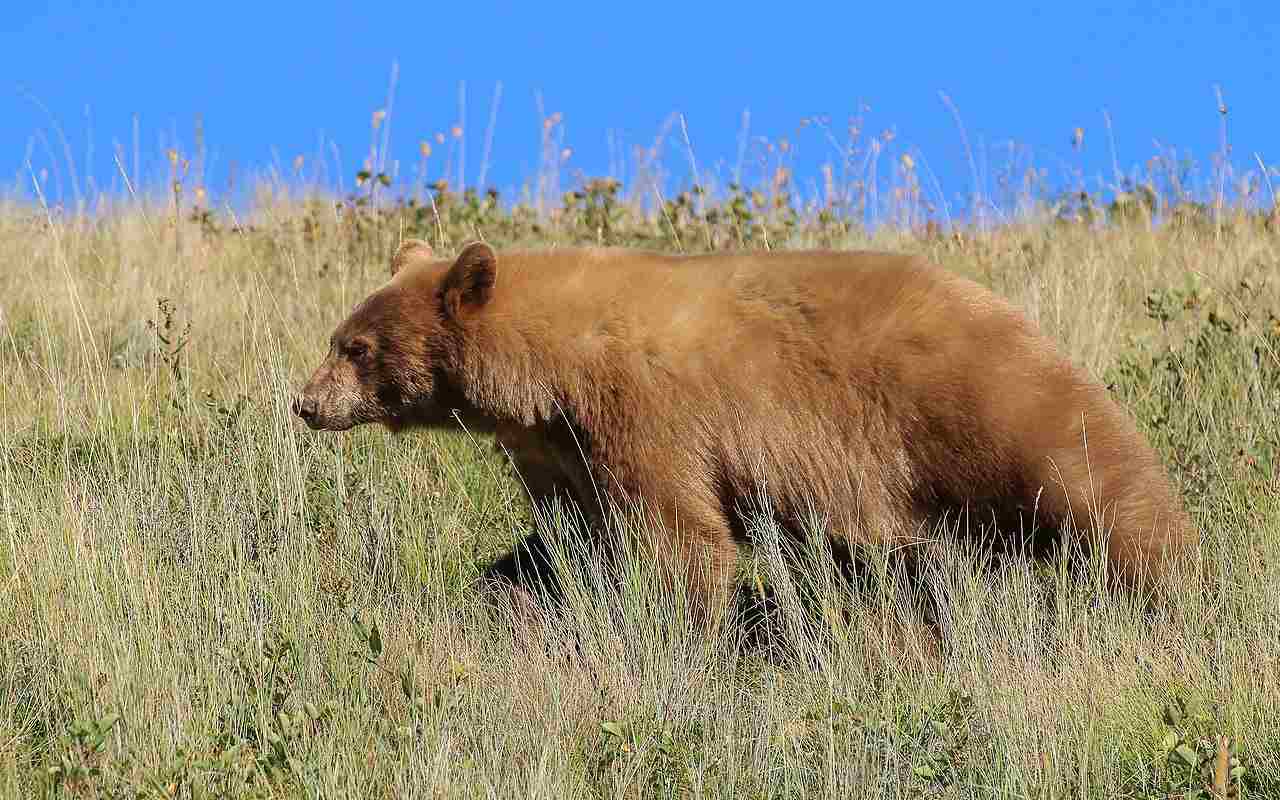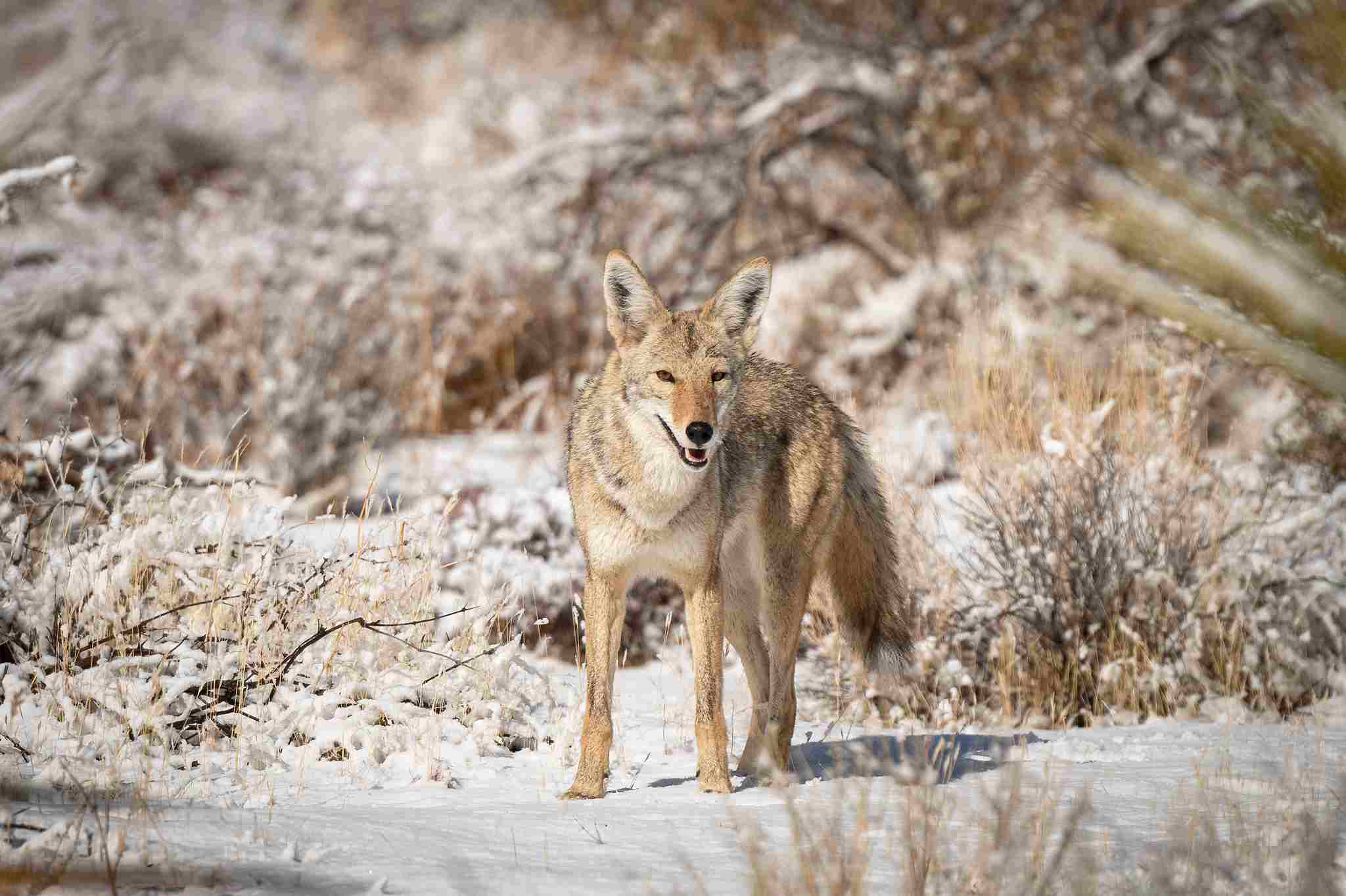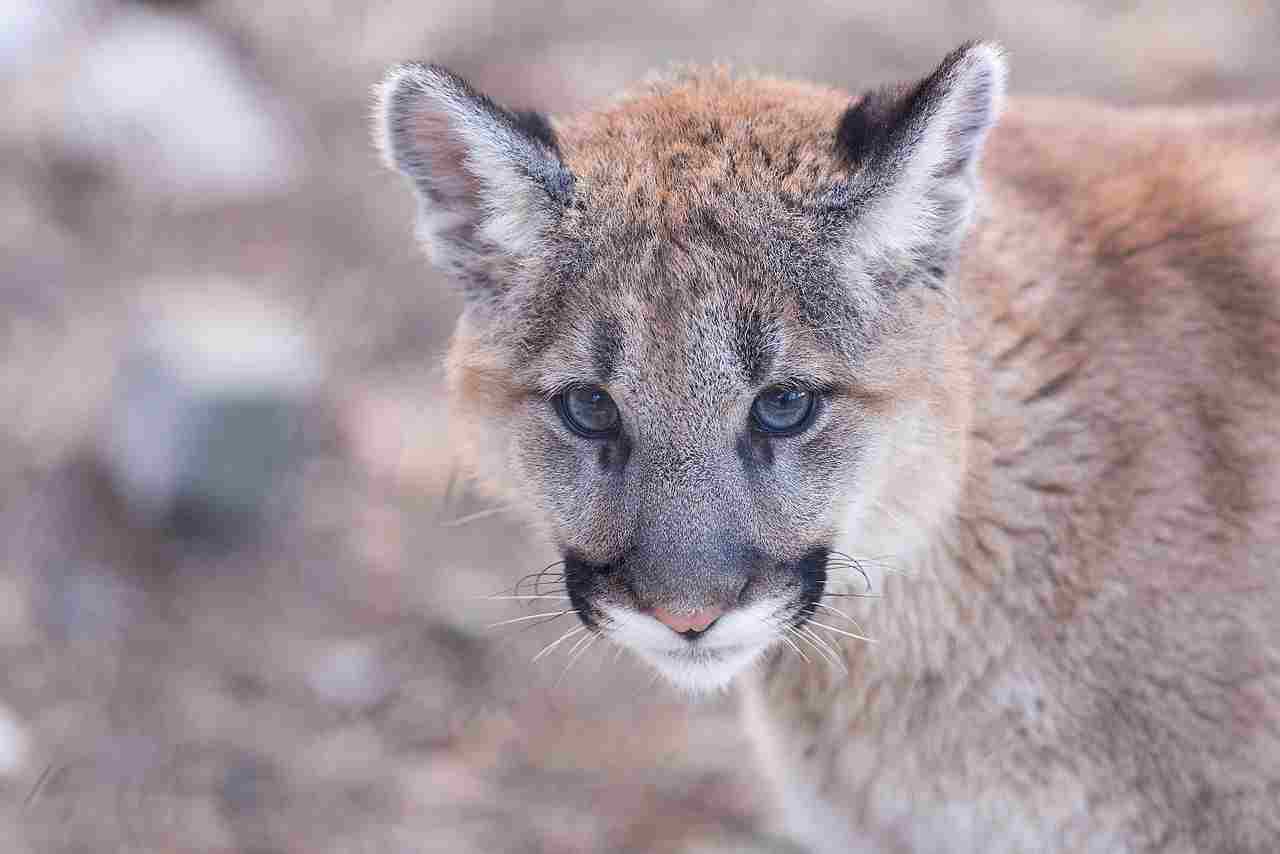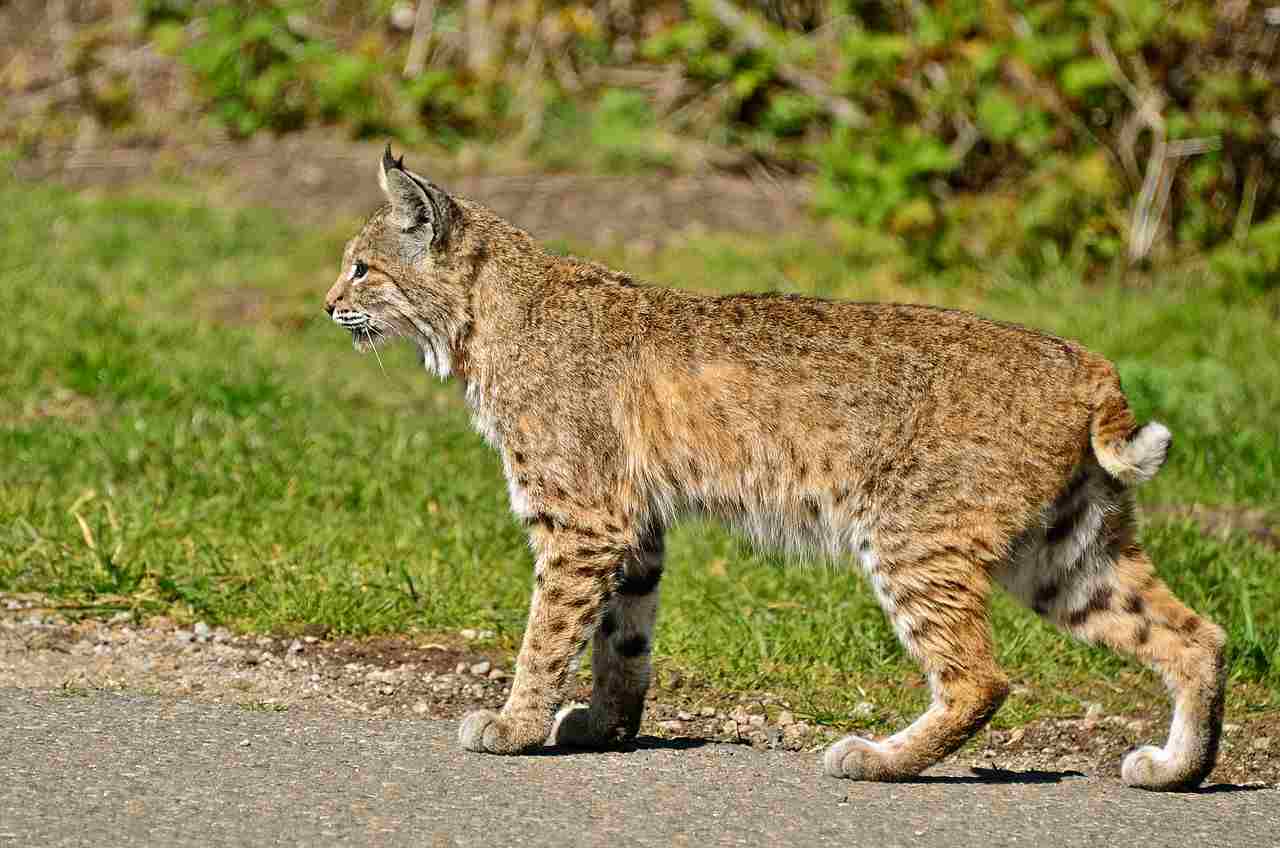Mountain Lion Vs Lion Size, Weight, Ecological Comparison
A lion will win against a mountain lion in a fight because it is much larger and heavier. The size advantage gives the lion more strength and power, making it a formidable opponent.
Additionally, the lion is known for its aggressiveness, which gives it an edge in a physical confrontation. Another factor to consider is the lion’s massive bite force, which can cause significant damage. These factors, along with others like speed and agility, will be explored in detail to compare the two species in this article.
Reasons Why a Lion Will Win a Mountain Lion In a Fight/Physical Confrontation
I). Size and Weight Advantages
One of the main reasons why a lion will win against a mountain lion in a fight is due to its size and weight advantages. Lions are significantly larger and heavier than mountain lions, giving them a clear physical advantage.
Adult male lions can weigh up to 420 pounds, while mountain lions typically weigh between 100 and 200 pounds. This size difference translates into greater strength and power for the lion, making it a formidable opponent in a physical confrontation. With its larger size, the lion can deliver more forceful blows and overpower the mountain lion.
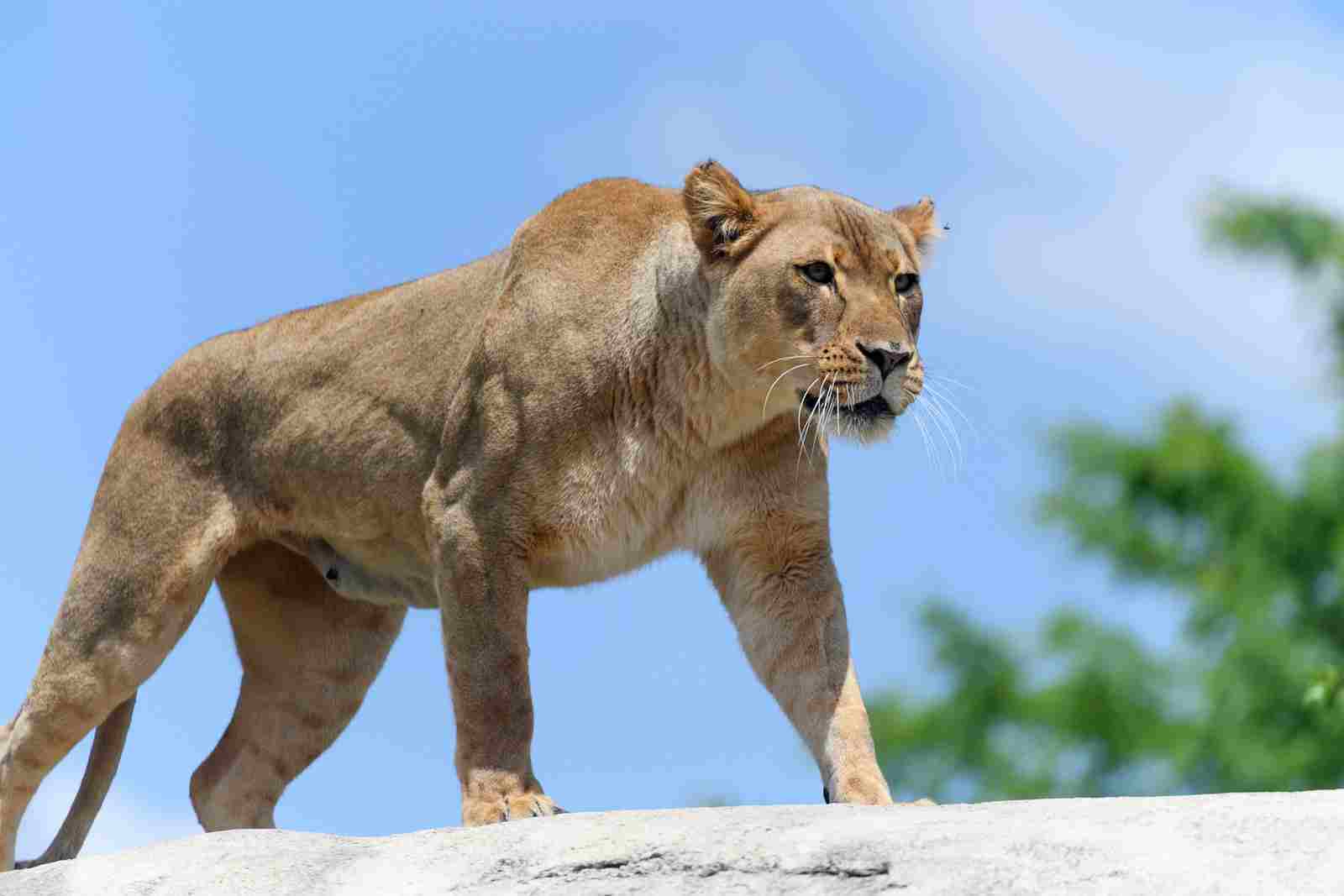
II). Superior Strength and Endurance
In addition to their size advantage, lions also possess superior strength and endurance compared to mountain lions. Lions have well-developed muscles and a robust skeletal structure, allowing them to exert more force and sustain physical exertion for longer periods.
This gives them an edge in a fight, as they can deliver powerful strikes and maintain their stamina throughout the confrontation. Mountain lions, although agile and strong in their own right, cannot match the sheer strength and endurance of a lion.
III). Higher Aggressiveness
Another factor that contributes to a lion’s advantage in a fight is its higher level of aggressiveness. Lions are known for their territorial nature and their willingness to defend their pride at all costs.
This inherent aggression gives them a psychological advantage over mountain lions, making them more likely to initiate and dominate a physical confrontation. Mountain lions, while capable of defending themselves, are generally more solitary and less inclined to engage in aggressive encounters.
Therefore, the size and weight advantages, superior strength and endurance, and higher aggressiveness of lions make them more likely to win in a fight against mountain lions.
*Details of Comparison
| Aspect | Mountain Lion | Lion |
| Size and Weight | Smaller, 100-200 lbs. |
Larger, up to 420 lbs. (males)
|
| Strength and Endurance | Strong and agile |
Strong, with greater endurance
|
| Aggressiveness | Solitary, less aggressive |
Territorial and aggressive
|
| Bite Force | Around 350 psi | Around 650 psi |
| Overall Physical Capacity | Smaller size, less muscle mass |
Larger size, more muscle mass
|
| Habitat | Americas, various ecosystems |
Africa, grasslands and savannas
|
| Lifespan | 10-13 years |
10-14 years (up to 20 years)
|
| Behavior | Solitary, stealthy hunting |
Social, cooperative hunting
|
| Reproduction | Every 2-3 years, fewer offspring |
Every 2 years, more offspring
|
| Danger to Humans | Less dangerous | More dangerous |
| Intelligence | Individual intelligence |
Social intelligence
|
| Tracks | Smaller tracks |
Larger, more distinct tracks
|
| Conservation Status | Least concern | Vulnerable |
1). Taxonomy
The taxonomy of the mountain lion and lion reveals interesting similarities and differences between the two species. The mountain lion, scientifically known as Puma concolor, belongs to the Felidae family and the Puma genus. On the other hand, the lion, scientifically known as Panthera leo, belongs to the Felidae family and the Panthera genus.
While both species belong to the same family, their genus classification sets them apart. The mountain lion is the only member of the Puma genus, making it unique in its taxonomic classification. In contrast, the lion is part of the Panthera genus, which also includes other big cats like tigers, leopards, and jaguars.
This distinction in taxonomy highlights the evolutionary divergence between the mountain lion and lion. Despite their shared family, the mountain lion’s solitary nature and smaller size differentiate it from the social and larger lion.
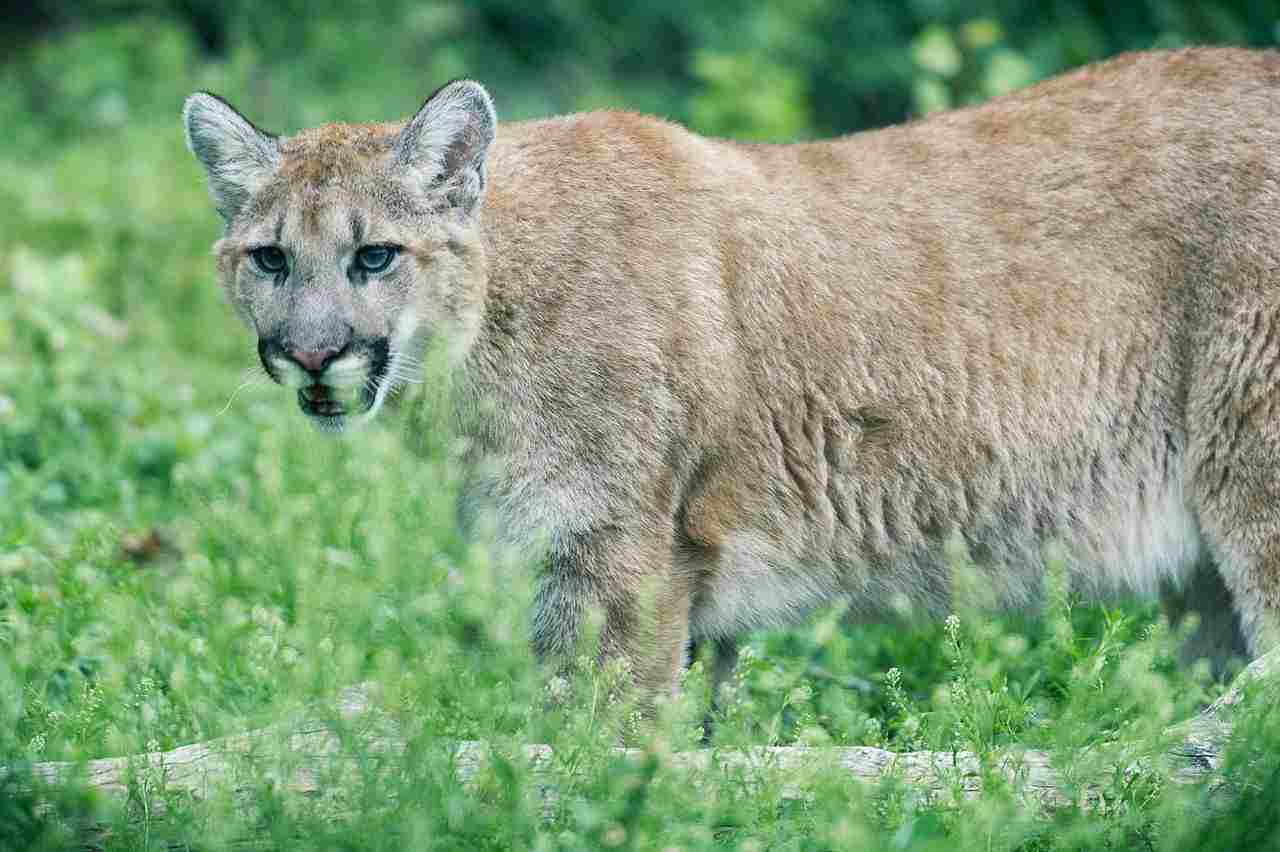
2). Appearance
The appearance of both the mountain lion and lion is distinct and adapted to their respective habitats. Starting with their coats, both species have fur that provides them with protection and insulation. However, there are differences in coloration and pattern. The mountain lion typically has a tan or light brown coat, which helps it blend into its surroundings in rocky or forested areas. On the other hand, the lion has a sandy or tawny coat with a mane in males, which serves as a display of dominance and protection.
In terms of stature and build, the mountain lion has a sleek and agile body, designed for stealth and quick movements. Its muscular physique allows it to navigate through rugged terrains and climb trees effortlessly. In contrast, the lion has a robust and powerful build, with a larger size and more muscular frame. This adaptation suits its role as a social predator and enables it to take down larger prey.
When comparing the appearance of these animals, it is clear that they have distinct physical characteristics that are suited to their specific environments and hunting strategies. The mountain lion’s camouflage and agile build make it a stealthy predator, while the lion’s larger size and impressive mane make it an imposing presence in the savannah.
3). Size
When comparing the size of the mountain lion and lion, there are notable differences in their total body length and height at the shoulders. The mountain lion, also known as the cougar, typically measures between 6 to 8 feet in total body length, with males being slightly larger than females. In terms of height at the shoulders, they stand at around 2.5 to 3 feet.
On the other hand, the lion is significantly larger in size. Adult male lions can reach a total body length of 8 to 10 feet, excluding the tail, while females are slightly smaller. When it comes to height at the shoulders, male lions can stand at an impressive 3.5 to 4 feet, making them a formidable presence in the animal kingdom.
These size differences between the mountain lion and lion are a result of their distinct ecological adaptations. The mountain lion’s smaller size allows it to navigate through rocky terrains and dense forests with ease, while the lion’s larger size is advantageous for hunting and defending its territory in the open grasslands of the savannah.
Therefore, the mountain lion and lion differ significantly in terms of their size. While the mountain lion is smaller and more agile, the lion’s larger size gives it a commanding presence in its habitat.
4). Weight
The mountain lion, also known as the cougar, typically weighs between 80 to 220 pounds, with males being larger and heavier than females. On the other hand, the lion is significantly heavier. Adult male lions can weigh anywhere between 330 to 550 pounds, while females are generally smaller and weigh around 265 to 395 pounds.
The difference in weight between the mountain lion and lion is primarily due to their distinct ecological adaptations and lifestyles. The mountain lion’s lighter weight allows it to be more agile and maneuverable in its habitat, making it an efficient predator in mountainous and forested areas. In contrast, the lion’s larger weight is advantageous for hunting and taking down larger prey in the open grasslands of the savannah.
The weight of these two big cats plays a crucial role in their hunting strategies and overall physical capabilities. While the mountain lion relies on its agility and stealth to ambush and overpower its prey, the lion’s sheer size and strength enable it to bring down larger animals through cooperative hunting techniques.
5). Speed and Agility
The mountain lion, known for its exceptional athleticism, is incredibly agile and can navigate through rugged terrains with ease. Its muscular hind legs allow it to leap up to 40 feet horizontally and 15 feet vertically in a single bound, making it a formidable predator in its mountainous and forested habitat.
On the other hand, the lion may not possess the same level of agility as the mountain lion, but it compensates with its impressive speed. Lions are capable of reaching speeds of up to 50 miles per hour in short bursts, making them one of the fastest land animals. This speed advantage is particularly useful during hunts on the open grasslands of the savannah, where they can chase down their prey over long distances.
While the mountain lion relies on its agility to stalk and ambush its prey, the lion’s speed allows it to engage in cooperative hunting strategies with other members of its pride. By working together, lions can effectively surround and bring down larger prey, utilizing their speed and strength to overpower their target.
Therefore, while the mountain lion excels in agility, the lion’s speed gives it an advantage in different hunting scenarios.
6). Bite Force
The mountain lion, with its strong jaws and sharp teeth, has a bite force of around 350 pounds per square inch (psi). This allows it to deliver a powerful bite that can easily incapacitate its prey.
On the other hand, the lion, being larger and more muscular, possesses a bite force of approximately 650 psi. This is significantly stronger than that of the mountain lion and is a result of its larger skull and jaw muscles. With such a formidable bite force, the lion is capable of crushing bones and delivering a swift and lethal bite to its prey.
The difference in bite force between these two big cats is a reflection of their hunting strategies. The mountain lion relies on its agility and stealth to ambush and overpower its prey, using its bite force to quickly dispatch it. In contrast, the lion’s bite force is an essential tool for bringing down larger prey, such as wildebeests or zebras, by clamping onto their necks or throats.
Therefore, while the mountain lion has a respectable bite force, the lion’s significantly stronger bite force gives it an advantage when it comes to hunting and taking down larger prey.
7). Overall Physical Capacity (Which is Stronger?)
When comparing the overall physical capacity of lions and mountain lions, it becomes evident that lions have a clear advantage due to their superior size, weight, muscle mass, and endurance. Lions are known for their powerful presence, and these physical attributes play a significant role in their dominance over mountain lions.
In terms of size, lions are much larger than mountain lions. Adult male lions can weigh up to 420 pounds, while mountain lions typically weigh around 150 pounds. This significant difference in weight gives lions a considerable advantage in terms of strength and power.
Furthermore, lions possess a greater muscle mass, which contributes to their overall physical strength. Their muscular build allows them to overpower and bring down larger prey, showcasing their superior physical capacity.
Endurance is another crucial factor in determining physical capacity. Lions are known for their ability to sustain long chases and exert themselves for extended periods. This endurance gives them an edge over mountain lions, allowing them to outlast and outperform their smaller counterparts in a physical confrontation.
Therefore, when comparing the overall physical capacity of lions and mountain lions, it is clear that lions possess superior strength, size, muscle mass, and endurance. These factors make lions the stronger of the two species, giving them a significant advantage in any violent confrontation.
8). Habitat
The habitat of lions and mountain lions plays a significant role in shaping their behavior and survival strategies. Lions are primarily found in the grasslands, savannas, and open woodlands of Africa, with some populations also inhabiting the Gir Forest in India. On the other hand, mountain lions, also known as cougars or pumas, have a much wider geographic range, spanning from North America to South America. They are adaptable creatures and can thrive in various ecosystems, including forests, mountains, deserts, and even swamps.
Lions’ preference for open grasslands and savannas is closely tied to their hunting style. These habitats provide them with ample opportunities to stalk and ambush their prey, which mainly consists of large herbivores such as zebras, wildebeests, and buffalo. The open terrain allows lions to utilize their speed and agility to their advantage during the chase.
Mountain lions, on the other hand, are solitary hunters and rely on stealth and camouflage to capture their prey. Their ability to adapt to different habitats enables them to exploit a wide range of food sources, including deer, elk, and smaller mammals. From dense forests to rugged mountains, mountain lions have adapted to thrive in diverse environments.
Therefore, while lions prefer open grasslands and savannas, mountain lions have a broader habitat range, allowing them to survive in various ecosystems.
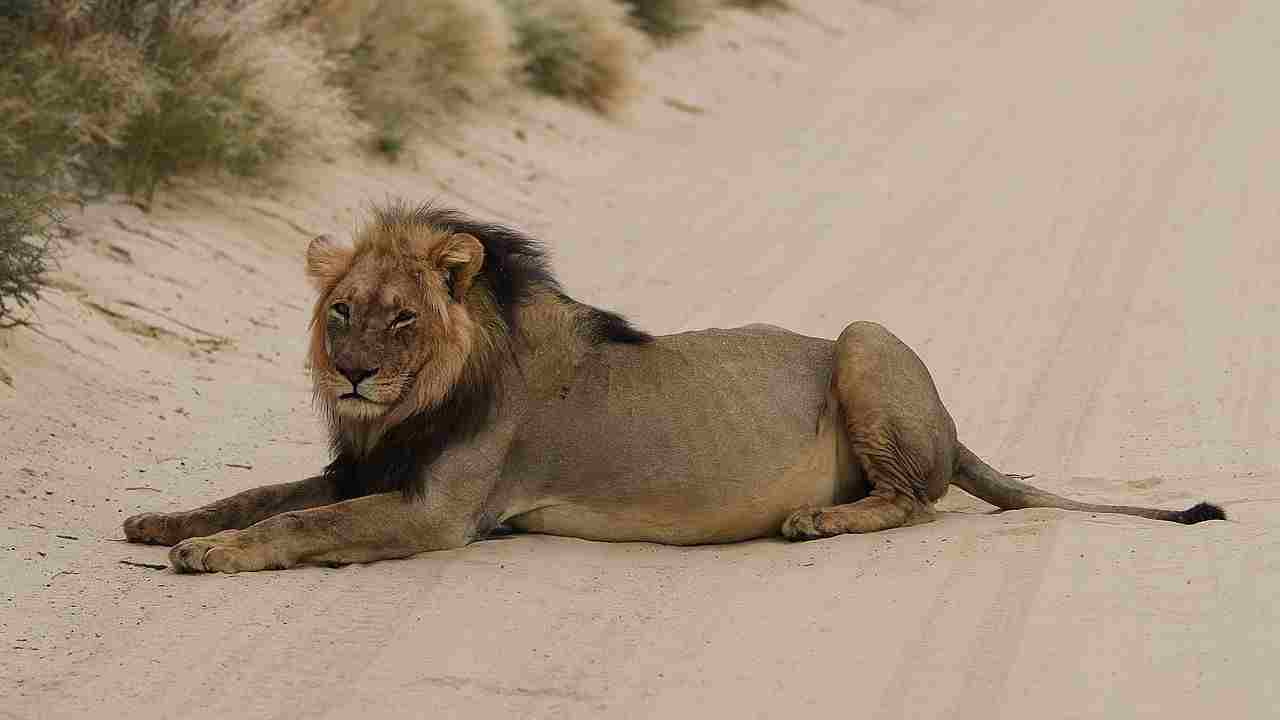
9). Lifespan
When comparing the lifespan of lions and mountain lions, it is important to consider various factors that can influence their longevity. Lions typically have a lifespan of around 10 to 14 years in the wild, although some individuals have been known to live up to 20 years. On the other hand, mountain lions have a slightly longer lifespan, with an average of 10 to 13 years in the wild.
The lifespan of both species can be influenced by factors such as habitat quality, availability of prey, competition for resources, and human activities. Lions living in protected areas with abundant prey and minimal human disturbance tend to have longer lifespans compared to those in more fragmented habitats or areas with high human-wildlife conflict.
Mountain lions, being adaptable and solitary hunters, can thrive in a variety of habitats, which may contribute to their slightly longer lifespan. However, they also face threats such as habitat loss, fragmentation, and conflicts with humans, which can impact their survival and reduce their lifespan.
Therefore, while mountain lions have a slightly longer lifespan than lions, both species face challenges that can affect their longevity.
10). Behavior
When comparing the behavior of lions and mountain lions, several key aspects come into play. Both species exhibit distinct behaviors that are shaped by their ecological and social dynamics.
Feeding is a crucial behavior for both lions and mountain lions. Lions are known for their cooperative hunting strategies, where they work together in groups called prides to bring down large prey. This social behavior allows them to take down larger animals and increases their chances of successful hunts. On the other hand, mountain lions are solitary hunters, relying on their stealth and agility to ambush and capture their prey.
Aggression is another behavior that differs between the two species. Lions, especially males, are known for their territorial behavior and will fiercely defend their pride and territory from intruders. Mountain lions, being solitary animals, are less territorial and tend to avoid confrontations with other individuals.
Vocalization is an important aspect of communication for both species. Lions have a wide range of vocalizations, including roars, growls, and snarls, which they use to communicate with other pride members and establish their presence. Mountain lions, on the other hand, have a more limited vocal repertoire, with vocalizations such as screams, hisses, and purrs.
Social behavior also differs between lions and mountain lions. Lions live in prides, which consist of multiple females, their offspring, and a few dominant males. This social structure allows for cooperative hunting, protection of young, and sharing of resources. Mountain lions, however, are solitary animals and have minimal social interactions, except during mating season.
In terms of parenting, both species exhibit care for their young. Lionesses play a crucial role in raising cubs, while male lions provide protection and defend the pride. Mountain lion mothers are solely responsible for raising their cubs until they become independent.
11). Reproduction
Lions are viviparous, meaning they give birth to live young. Lionesses have a gestation period of approximately 110 days before giving birth to a litter of one to six cubs. The cubs are born blind and rely on their mother for nourishment and protection. Lionesses play a crucial role in raising the cubs, while male lions provide protection and defend the pride.
On the other hand, mountain lions are also viviparous and give birth to live young. However, their gestation period is shorter, lasting around 82 to 96 days. Mountain lion mothers are solely responsible for raising their cubs until they become independent. The cubs stay with their mother for about a year, learning essential hunting and survival skills before venturing out on their own.
In terms of reproductive rates, lions have a higher reproductive potential compared to mountain lions. Lionesses can reproduce every two years, while mountain lions have a longer reproductive interval, typically reproducing every two to three years.
Therefore, the reproductive strategies of lions and mountain lions reflect their different social structures and ecological adaptations. Lions rely on cooperative parenting and social dynamics within prides, while mountain lions have a more solitary and independent approach to raising their young.
12). Danger Posed to Humans
When it comes to the danger posed to humans, the lion is much more dangerous than the mountain lion. Lions are known for their aggressive and bold nature, making them a formidable threat. With their larger size and strength, lions have the ability to overpower and cause significant harm to humans.
In terms of the rate of human deaths caused, lions have a higher record compared to mountain lions. Due to their social structure and hunting behavior, lions often come into contact with humans in areas where their territories overlap. This proximity increases the chances of conflicts and potential attacks.
If you ever find yourself encountering a lion or mountain lion, it is crucial to take precautions to ensure your safety. In the case of a lion encounter, it is important to avoid direct eye contact and slowly back away without turning your back. It is also advisable to make yourself appear larger by raising your arms and making loud noises to deter the lion.
Comparing the danger posed by these animals, it is evident that lions pose a greater threat to humans due to their aggressive behavior, larger size, and higher rate of human deaths caused.
13). Intelligence
Lions are known for their social structure and complex communication systems. They live in prides, which require coordination and cooperation among members. This social intelligence allows them to work together during hunts and defend their territories effectively. Lions also display problem-solving skills, especially when it comes to finding food and protecting their young.
On the other hand, mountain lions are solitary animals, which requires a different set of skills. They rely on their individual intelligence to survive and thrive in their habitats. Mountain lions are excellent hunters, using stealth and patience to stalk their prey. They are also highly adaptable, able to navigate through various terrains and find suitable shelter.
In terms of which animal is more intelligent, it is difficult to determine. Lions’ social intelligence and complex communication systems give them an advantage in certain situations, while mountain lions’ individual intelligence and adaptability make them highly successful predators. Ultimately, their intelligence is specialized for their respective lifestyles.
14). Tracks
When comparing the tracks of a mountain lion and a lion, there are some notable differences. The tracks left by a mountain lion, also known as a cougar or puma, are typically round and measure around 3 to 4 inches in diameter. These tracks show four toes with retractable claws, and the hind tracks often overlap the front tracks. The overall shape of the tracks is similar to that of a domestic cat, but much larger in size.
On the other hand, lion tracks are larger and more distinct. They measure around 4 to 5 inches in diameter and show four toes with claws. The hind tracks of a lion are usually larger than the front tracks, and they often leave deeper imprints due to their weight. The tracks of a lion also tend to show more defined pad marks, which can help distinguish them from other big cat tracks.
These differences in tracks reflect the variations in the size and weight of the two animals. Lions are generally larger and heavier than mountain lions, which is evident in the size and depth of their tracks. However, both animals have similar features in terms of the number of toes and the presence of retractable claws.
Overall, tracking the footprints of these majestic big cats can provide valuable insights into their presence and behavior in a particular area.
15). Conservation Status
Mountain lions, also known as cougars or pumas, are considered a species of least concern according to the International Union for Conservation of Nature (IUCN). This means that their population is stable and not currently at risk of extinction. However, in certain regions, such as the United States, mountain lions are listed as a protected species due to concerns about habitat loss and human-wildlife conflicts.
On the other hand, lions are facing more significant conservation challenges. They are listed as a vulnerable species by the IUCN, meaning they are at a high risk of extinction in the wild. The main threats to the survival of lion populations include habitat loss, poaching, and conflicts with humans. These factors have led to a significant decline in lion populations across Africa.
Therefore, while mountain lions are currently considered a species of least concern, lions are facing a more critical conservation status as a vulnerable species. The main threats to the survival of wild lion populations are habitat loss, poaching, and human-wildlife conflicts.
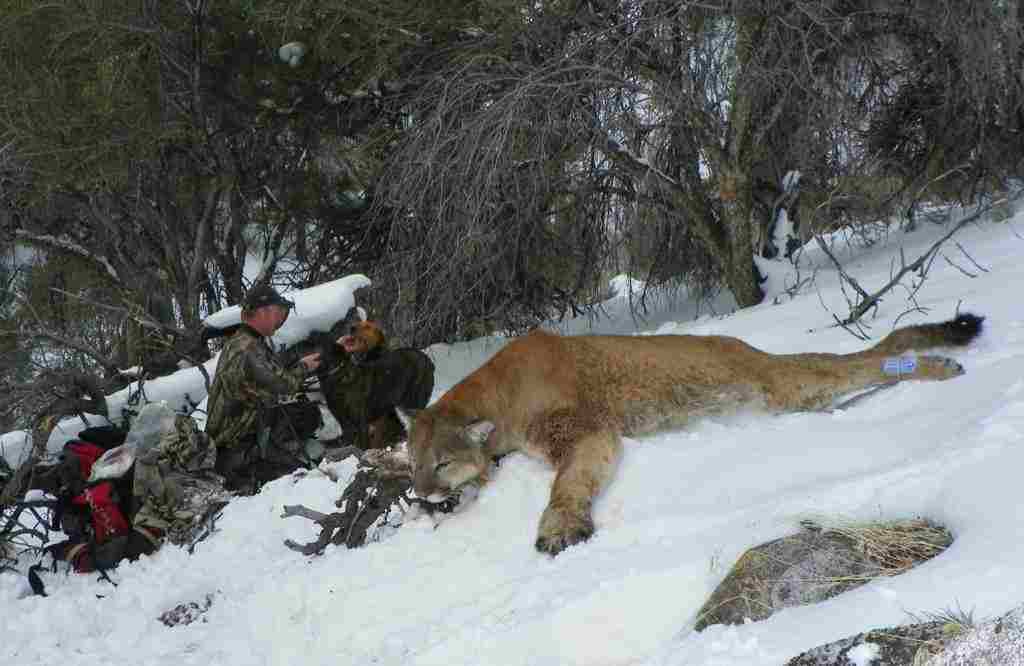
Conclusion
I). SIMILARITIES
In comparing mountain lions and lions, it is evident that these majestic big cats share some similarities. Both species belong to the same family, Felidae, and are known for their impressive physical attributes.
They are both large predators with muscular bodies, sharp claws, and powerful jaws. Additionally, both mountain lions and lions are solitary animals, preferring to hunt and live alone rather than in groups.
II). DIFFERENCES
Despite their similarities, there are also notable differences between mountain lions and lions. One significant difference lies in their habitats. Mountain lions are primarily found in the Americas, inhabiting a range of ecosystems from mountains to forests. On the other hand, lions are native to Africa and are typically found in grasslands, savannas, and open woodlands.
Another difference is their social behavior. Mountain lions are solitary creatures, while lions are highly social animals that live in prides. Lions form strong social bonds within their pride, consisting of multiple females, their offspring, and a few dominant males. This social structure allows them to cooperate during hunting and protect their territory more effectively.
In terms of conservation status, mountain lions are considered a species of least concern, while lions are listed as vulnerable. Mountain lions have a stable population and are not currently at risk of extinction. However, lions face significant conservation challenges due to habitat loss, poaching, and conflicts with humans, leading to a decline in their populations across Africa.
